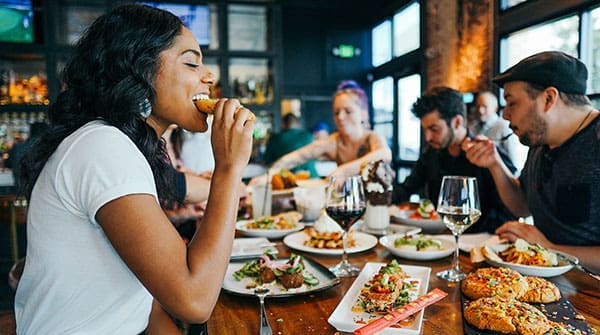 Did we have too many restaurants before the COVID-19 pandemic?
Did we have too many restaurants before the COVID-19 pandemic?
Did the pandemic only wipe out ‘extra’ restaurants in Canada? With the labour shortage, the cost of food ingredients exploding, and the list of regulations growing almost every year, making a restaurant profitable has become difficult.
Certainly, the pandemic has presented a golden opportunity for the industry to reflect on its future.
Before the pandemic, restaurants were in their glory years. Compared to 20 or 30 years ago, going out to eat was routine for many of us. Canadians spent an average of about 35 per cent of their food budget on restaurants, and the sector was on the verge of exceeding $100 billion in sales per year.
But in March 2020, everything changed. According to Statistics Canada, there were approximately 65,000 restaurants at the start of 2020. That number is probably 40,000 to 45,000 today. No one is quite sure, but this approximation seems fair enough.
Although the sector has recorded fewer than 30 bankruptcies since the start of the pandemic, many operators have simply abandoned the industry.
Despite the difficulties created by the pandemic, the sector is running at about 82 per cent of the capacity it had before the pandemic, according to Statistics Canada.
 Households are no longer spending 35 per cent – it’s now more like 27 or 28 per cent – of their food budget at restaurants. In fact, in April 2020, at the heart of the first wave, this percentage barely reached nine per cent. But in August of this year, several restaurants had record-breaking sales.
Households are no longer spending 35 per cent – it’s now more like 27 or 28 per cent – of their food budget at restaurants. In fact, in April 2020, at the heart of the first wave, this percentage barely reached nine per cent. But in August of this year, several restaurants had record-breaking sales.
However, the sector is still not out of the woods.
Managing a restaurant after the pandemic won’t be easy. According to a recent report from Restaurants Canada, the nation’s leading food service lobby group, nearly half of food service operators plan to increase menu prices by four per cent or more over the next year. One in five establishments expects to increase prices by at least six per cent and several have already done so. The cost of food is becoming a real problem, not only for consumers but for restaurant owners as well.
The labour shortage, which existed before the pandemic, has only worsened. Over the next year, it’s predicted that 42 per cent of restaurants will experience an increase in the number of vacant positions and more than 53 per cent plan to increase their employees’ salaries in the coming months. It’s great news for restaurant workers, who certainly deserve it, but someone will have to pay for it all.
These macroeconomic factors will make it difficult for the sector to go back to its 65,000-restaurant mark. For households, restaurant visits (now with higher prices) will certainly be less frequent. The 35 per cent portion of the family food budget allocated to meals out before the pandemic is not coming back anytime soon.
Some of the more than 20,000 restaurants that disappeared during the pandemic were excellent, leaving behind an incredible legacy. It’s sad to see many of these independent and family restaurateurs forced to abandon ship.
But in truth, the pandemic also eliminated several restaurants that lowered the quality of the sector. Food safety issues, food fraud, you name it. Some were already heading for closure and would have gone out of business whether there was a pandemic or not.
Most large chains that enjoy superior financial and strategic support emerged from the pandemic almost unscathed. By some estimates, while the big chains were closing about 10 per cent of the restaurants in the network, Canada was losing almost 50 per cent of its independent restaurants.
Most of the food service innovations we’ve seen as consumers have come from independents. Sushi dishes, as well as Korean, Mediterranean and Ethiopian cuisines, all came from independents first.
Big chains, on the other hand, offer us restaurants that are all alike and serve pretty much the same food from the same suppliers with only a few subtle differences.
The issue that deserves special attention is not how many restaurants we need to support our economy but what kind of restaurants we need. We may have too many restaurants offering the same dishes.
Our culinary identity will slowly be lost without chef restaurant owners, who will no longer be there to allow us to eat creative and tasty dishes inspired by market and local products.
Dr. Sylvain Charlebois is senior director of the agri-food analytics lab and a professor in food distribution and policy at Dalhousie University.
Sylvain is one of our Thought Leaders. For interview requests, click here.
The views, opinions and positions expressed by columnists and contributors are the authors’ alone. They do not inherently or expressly reflect the views, opinions and/or positions of our publication.
© Troy Media
Troy Media is an editorial content provider to media outlets and its own hosted community news outlets across Canada.

